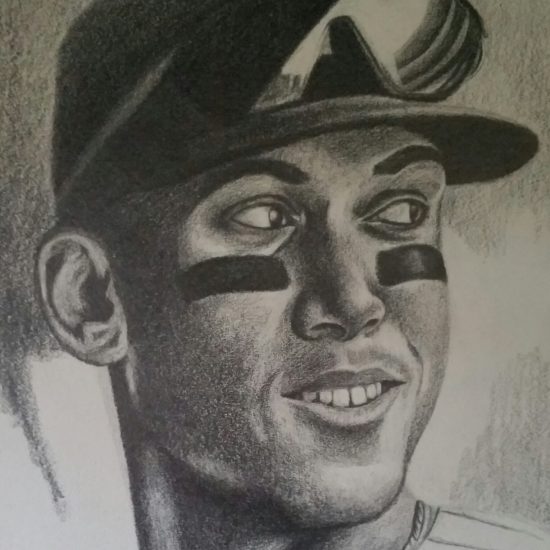Batting average and OPS are great, but they are just a piece of the picture. Context is critical. That’s where PLV can help us assess hitter performance with intuitively scaled metrics like decision value, contact ability, and power.
For pitchers, PLV assesses things like location, velocity, height-adjusted approach angle, and more than I can list to grade pitch quality.
Our approximate benchmarks for sample size are 400 pitches for DV, 200 swings for contact ability, and 75 BBE for power. For Pitchers, PLV and PLA stabilize at around 500 pitches.
If you’re new to PLV, you can find Nick’s primer here. All the metrics are normalized to 100. Decision Value (DV) has also been further broken down this season into zDV (inside the strike zone) and oDV (outside the strike zone).
Note: PLV data is current through Monday, July 22nd.
With the trade deadline looming, I thought it would make sense to review a few potential players who could be switching teams. Crochet has been more or less the lone bright spot for the White Sox this year, posting a terrific 29.8% K-BB% through 20 starts. He also leads all qualified SPs with a 35.2% K rate. He’s also arbitration-eligible for the next two seasons, so it’s safe to say the White Sox are looking for a haul.
As a member of the Nastiest Pitches crew, I’m always on the lookout for Crochet. He’s pure power, attacking hitters with high heat and cutters. Nothing fancy. Speaking of the cutter, it’s, well, nasty. Coming in at 91.4 mph, it’s in the top 20th percentile in velocity and PLV-approved pairing glove-side tilt with elite extension and good location.

If you look at his heat map, you’ll see Crochet loves to jam righties on the shoes with his cutter. It’s easy to see why it’s held batters to a .197 xwOBA (89th percentile).
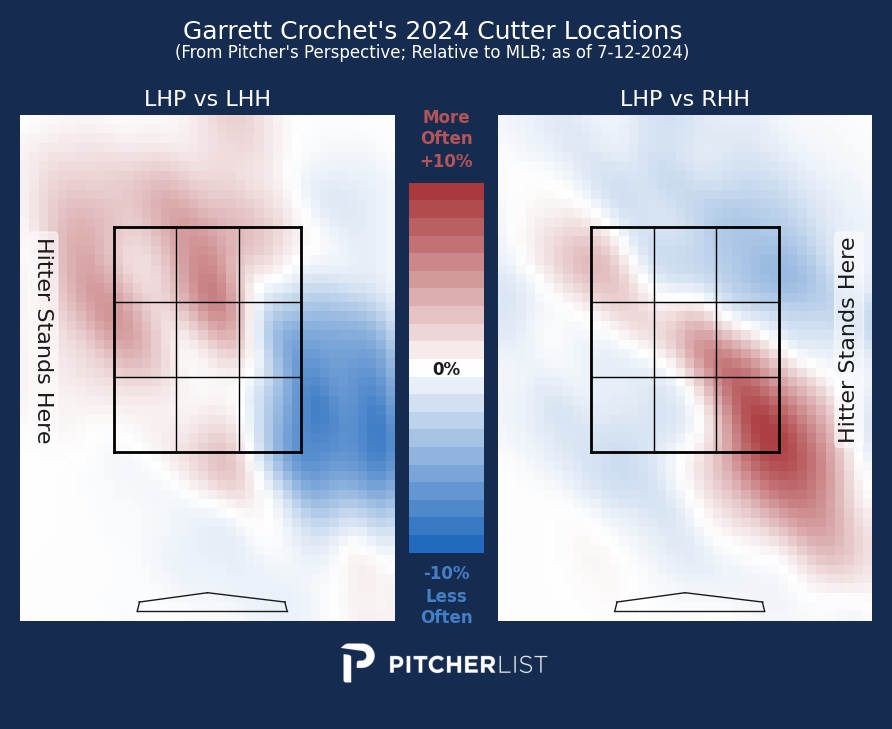
White Sox
I mean, the entire team is basically for sale at this point, right? Erick Fedde has been one of my favorite breakouts of the year. The man came into the season with a 5.41 ERA and 1.52 WHIP through 454.1 IP and is 14th among qualified SPs with a 2.98 ERA. Talk about a transformation. He does it a little differently than his fire-breathing, left-handed teammate with command and control of a deep five-pitch mix.
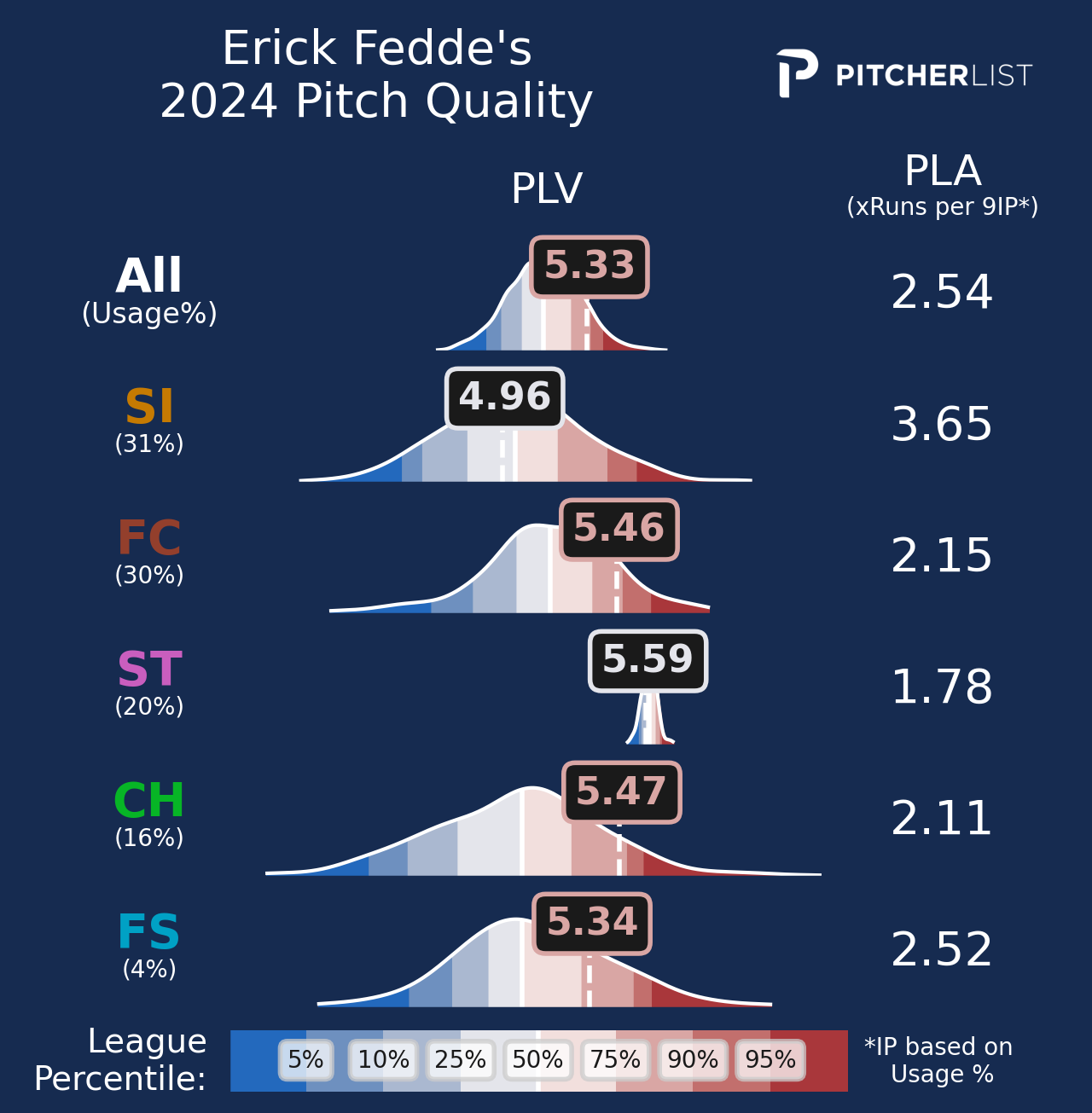
Michael Kopech is still a little wilder than you’d like, but his fastball has popped out of the pen this year and will certainly have some suitors.
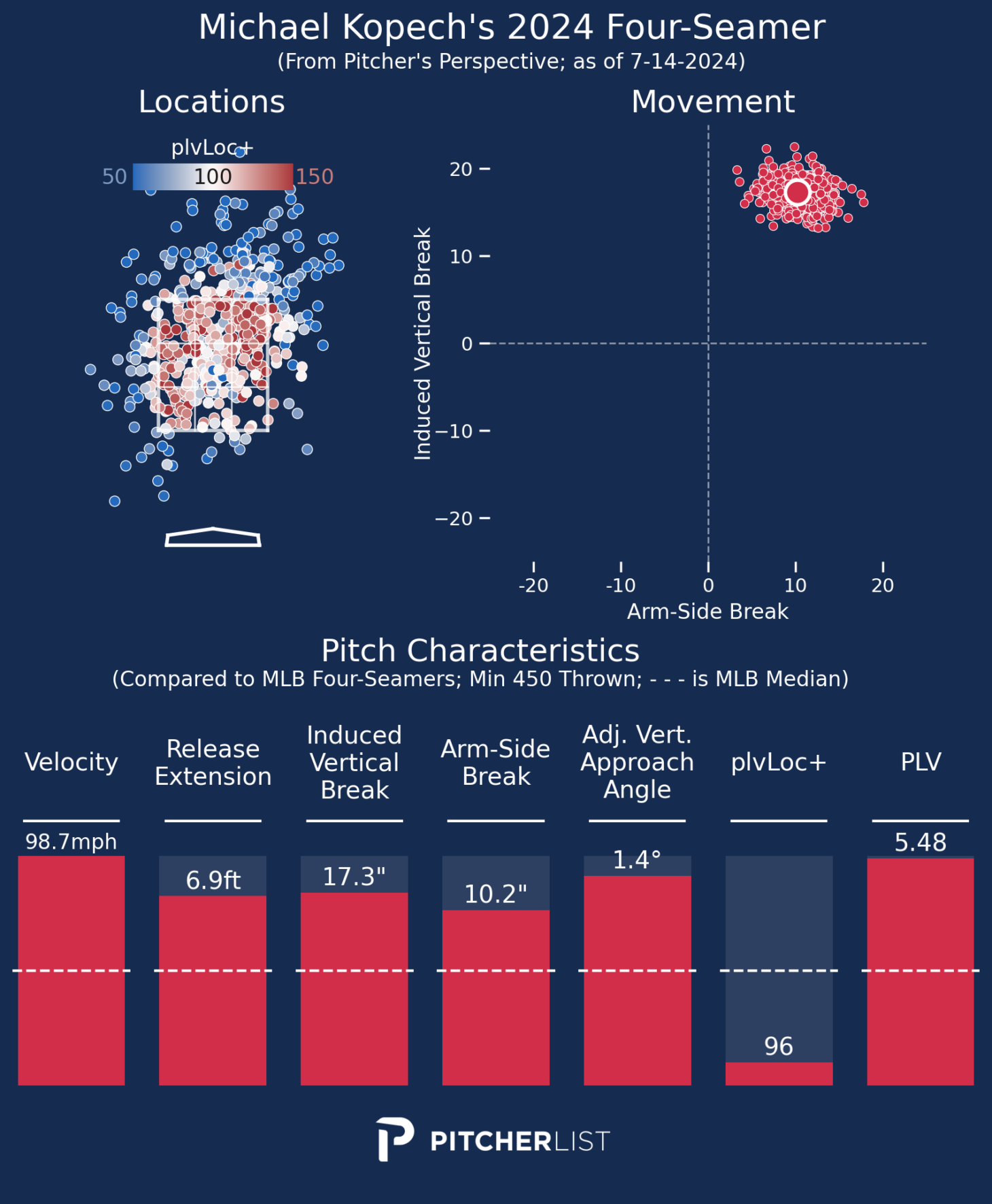
Health is always a concern with Luis Robert Jr., but his batted ball data remains exemplary: 126 power last year (372 BBE) vs. 125 (93 BBE) this year. He’s signed through 2027 (club option for 20M).
Andrew Vaughn has shown a bit more power this year (115; 256 BBE) than last year (105; 431 BBE). He’s arbitration-eligible through 2026.
Marlins
An unrestricted Free Agent next year, Tanner Scott seems like a lock to leave Miami. PLV isn’t a huge fan of Scott’s fastball location (91 PLV Loc+), but that’s nitpicking a little. His heater has returned a solid 13.5% SwStr % with 98th percentile Height Adjusted VAA.
As you might’ve guessed by his 1.27 ERA, Scott’s slider has been quite good, too, with a 5.55 PLV and 1.88 PLA.
A.J. Puk should be the closer left in Miami. Although, hey, maybe he gets traded, too (Arb-eligible through 2026). Puk’s four-seamer has been middling. However, PLV adores his slider and sweeper.
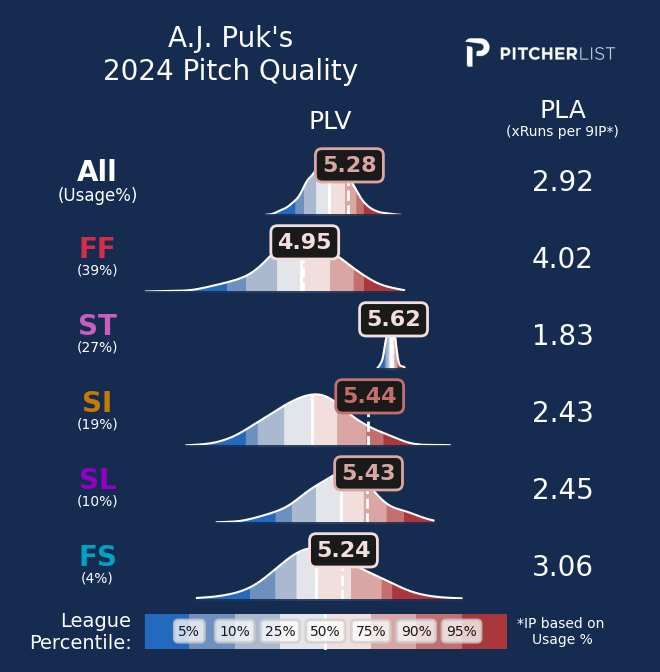
If you’re in a holds league, Andrew Nardi (5.42 PLV / 2.55 PLA) might be worth monitoring.
Jazz Chisholm Jr.’s power has fallen slightly compared to last year (110; 243 BBE). However, he’s made up for that with an impressive leap in contact ability from 78 last year to 98 this year.
Poor swing decisions (69 DV) have hurt Jake Burger this year. His batted-ball metrics aren’t as shiny as they were last year, either (110 power; 194 BBE). Still, I think he could do a lot of damage in a different lineup where he’s no longer the focal point. Although, he might stay put, considering he’s arb-eligible through 2028.
Angels
Luis Rengifo’s (2026 UFA) profile doesn’t stand out relative to his .315 batting average. He’s an extremely aggressive hitter (10.5% swing aggression) with above-average contact ability (109) but below-average power (87). He’s not my favorite type of hitter, but I understand the utility of a switch-hitter who can cover multiple positions.
We’ve talked about Taylor Ward at least once and possibly more. He’s making great swing decisions (122 DV) with great power (125; 242 BBE). The results aren’t there right now, but much like Brandon Nimmo, I wouldn’t be surprised to see better things on the horizon. Do the Angels trade Ward, though? He’s arbitration-eligible through 2026.
Tyler Anderson’s changeup has been pretty good this year (5.34 PLV / 2.38 PLA), so I don’t want to ignore that. But his 17.7% K rate and overall 5.08 PLV speak to someone who is pitching over their heads, although that kinda goes without saying since he’s 12th among SPs with a 2.91 ERA. The lefty is under contract through 2025.
Nationals
Jesse Winker, who will be a UFA this offseason, has had a brilliant resurgence, shaking off two bad years in Seattle and Milwaukee with a .358 wOBA, right around his career average of .354. Winker’s power is just about average (98; 216 BBE). However, his swing decisions are exceptional (125 DV) and could lengthen a contender’s lineup against RHP.
Lane Thomas remains arbitration-eligible next year. He’s shown average contact ability (100) and power (101; 196 BBE) with a sound plate approach and a good eye (113 DV, 109 SZ Judgement).
Kyle Finnegan (5.27 PLV / 2.59 PLA) and Hunter Harvey (5.22 PLV / 3.15 PLA) are arbitration-eligible next year.
Athletics
We featured Brent Rooker a couple of weeks ago. He swings and misses a bit (88 contact ability, but his power is real and spectacular.
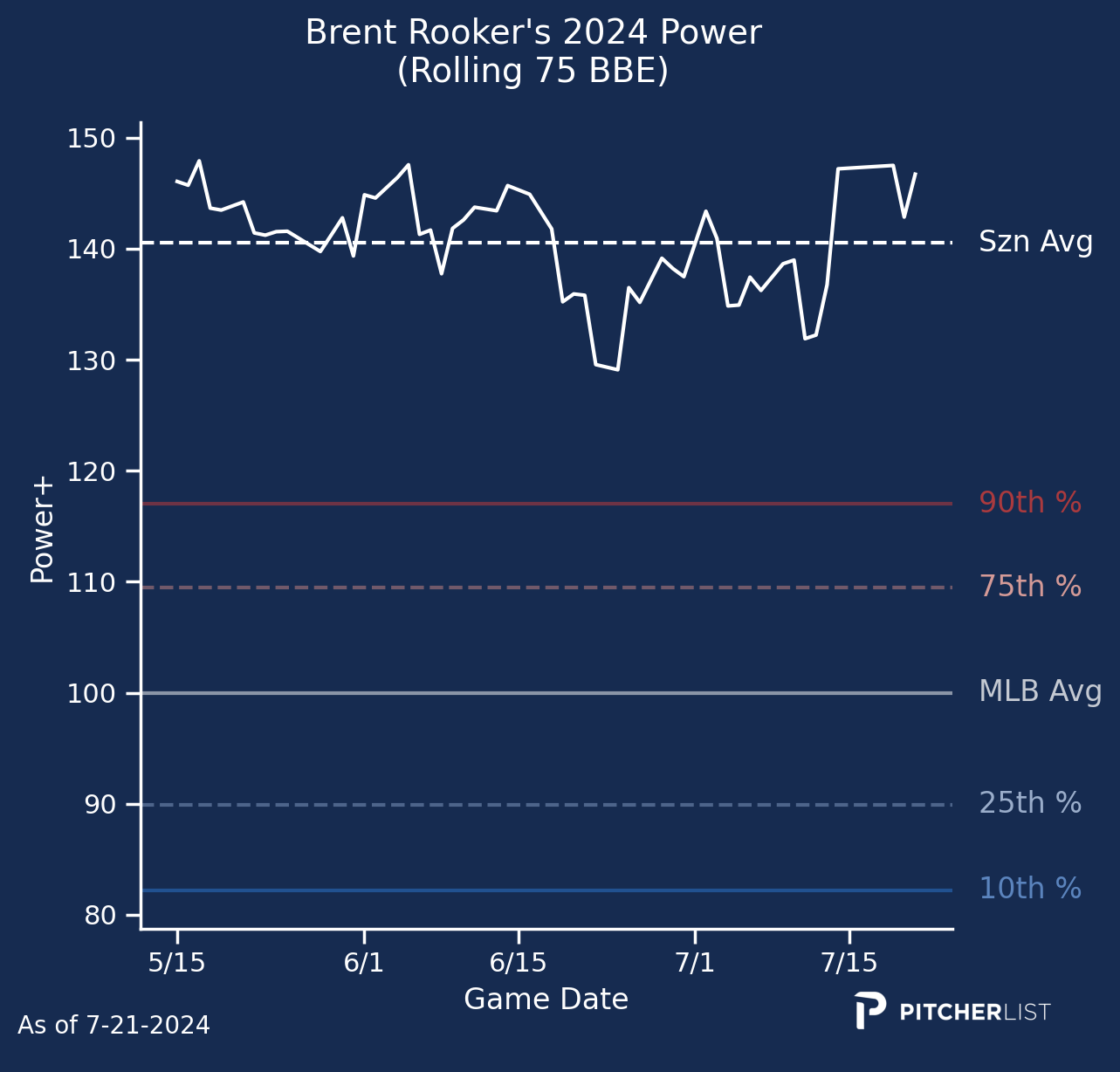
You can only imagine what the A’s are asking for Mason Miller’s fastball. You know, the one with a 22.8% SwStr rate.
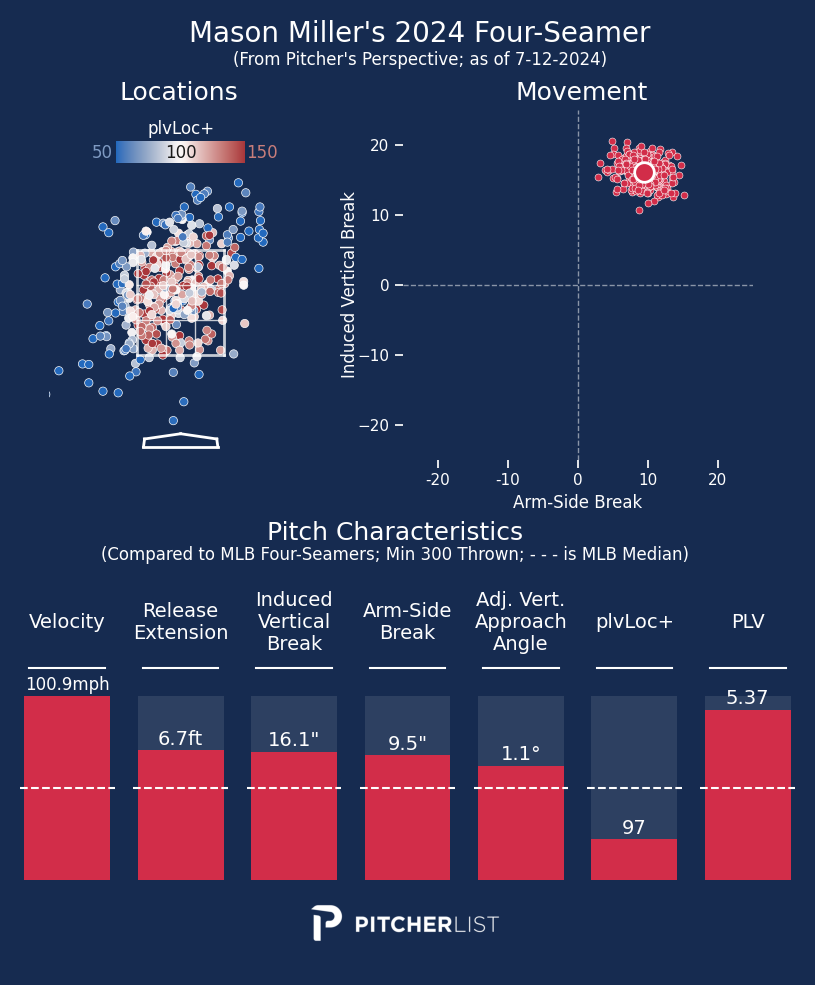
Blue Jays
Chad Green’s (2026 UFA) fastball has rebounded well (5.22 PLV / 2.69 PLA) and could make for a solid addition to a contending bullpen.
However, Yimi García’s fastball has been even better (5.46 PLV / 2.01 PLA). His curveball has been terrific, too (5.50 PLV / 1.90 PLA).
Yusei Kikuchi is an impending free agent. His 4.54 ERA and 1.31 WHIP aren’t pretty. But he’s also posted a career-best 20.5% K-BB. And his overall pitch quality, especially his curveball, is impressive.

George Springer is getting big bucks over the next two years, which might make it difficult to move him. But he’s certainly peaking at the right time. He’s also making phenomenal swing decisions (138 zDV and 118 oDV). It took a while, but The Summer of George might be upon us.

Tarik Skubal leads the AL with a 2.34 ERA and is arbitration-eligible for the next two seasons, so the price tag might be pretty high.
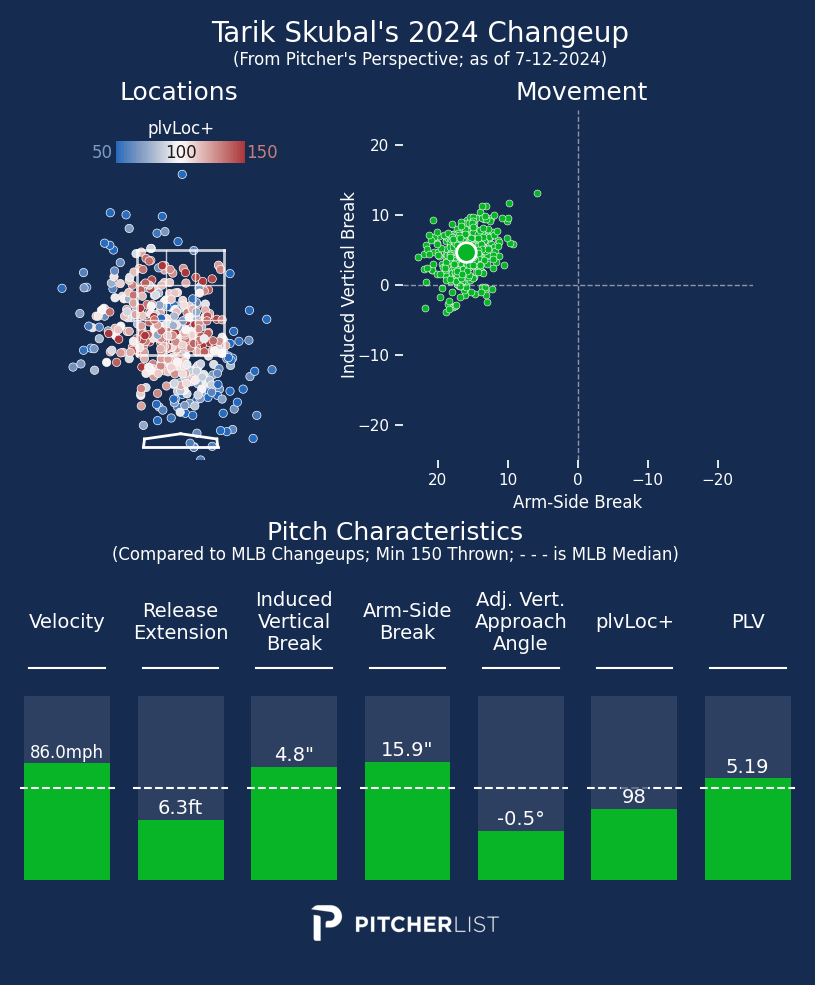
Skubal’s fastball (5.21 PLV / 2.66 PLA) remains exceptional (no kidding). However, his changeup, one of Nick’s favorite pitches, has looked a little different this year with 2.2 more inches of arm-side break and added velo (86 up from 84.3). The improvements have boosted his changeup’s PLV from 4.85 to 5.19 (2.83 PLA).
The Tigers’ one-year gamble on Jack Flaherty has worked beautifully, and his pitch quality metrics (5.22 PLV / 2.62 PLA) support his bounce back. Nate Schwartz recently took a closer look at the former Cardinal.
Elías Díaz isn’t an exciting profile for fantasy purposes with below-average contact ability (94) and power (89; 194 BBE), but, hey, catchers are always in demand.
Ryan McMahon, on the other hand, will not be traded. Well, so much for that.
Randy Arozarena started frigid, and his contact ability is down from 101 to 93, but as Kyle Bland mentioned last week, he’s heading in the right direction. He’ll remain arbitration-eligible through 2026.
Brandon Lowe has below-average contact ability (90) but has shown a good eye (115 SZ Judgement) and excellent power (116; 249 BBE). He will be a UFA in 2027.
Jameson Taillon’s fastball isn’t good, and his K rate is below 20%. But his secondary pitches, including his cutter (5.58 PLV / 1.70 PLA), sweeper (5.56 PLV / 1.74 PLA), and Curveball (5.45 PLV / 2.06 PLA) grade well. He’s under contract through 2026.
Nico Hoerner signed a three-year extension this past offseason and is having a slight down year, hitting .258. Still, his profile, highlighted by extraordinary contact ability (130), seems almost unchanged.
The AL West is tight; as it stands, the defending champs trail the Astros four in the loss column. It’s certainly doable, but a bad week could make them sellers. Max Scherzer’s recent arm issue isn’t encouraging, either. Nathan Eovaldi, who has a vesting option for $20 M next year, could be shipped away. He’s probably overperforming a touch, but that’s me nitpicking. More importantly, Eo’s fastball has looked sharp and even better than last year (4.69 PLV / 4.54 PLA).
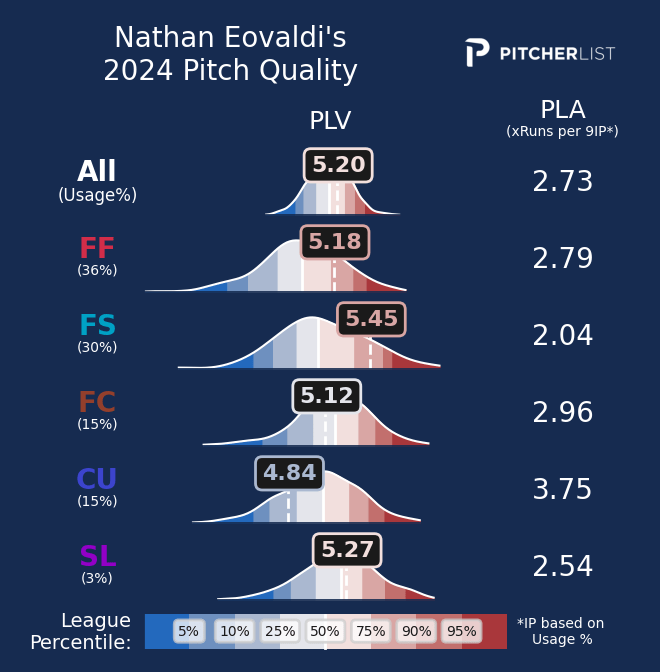
Kirby Yates is on an expiring contract with a 1.24 ERA and 0.95 WHIP. What his fastball lacks in velocity, it makes up for with 95th percentile total break and 87th percentile height-adjusted Vertical approach angle, which have helped sustain its 17.7% SwStr rate (94th percentile).
David Robertson’s career-best 37.2% K rate isn’t something I saw coming. His cutter is better than ever, boasting a 99th percentile-induced vertical break and a 95th percentile height-adjusted Vertical approach angle.



